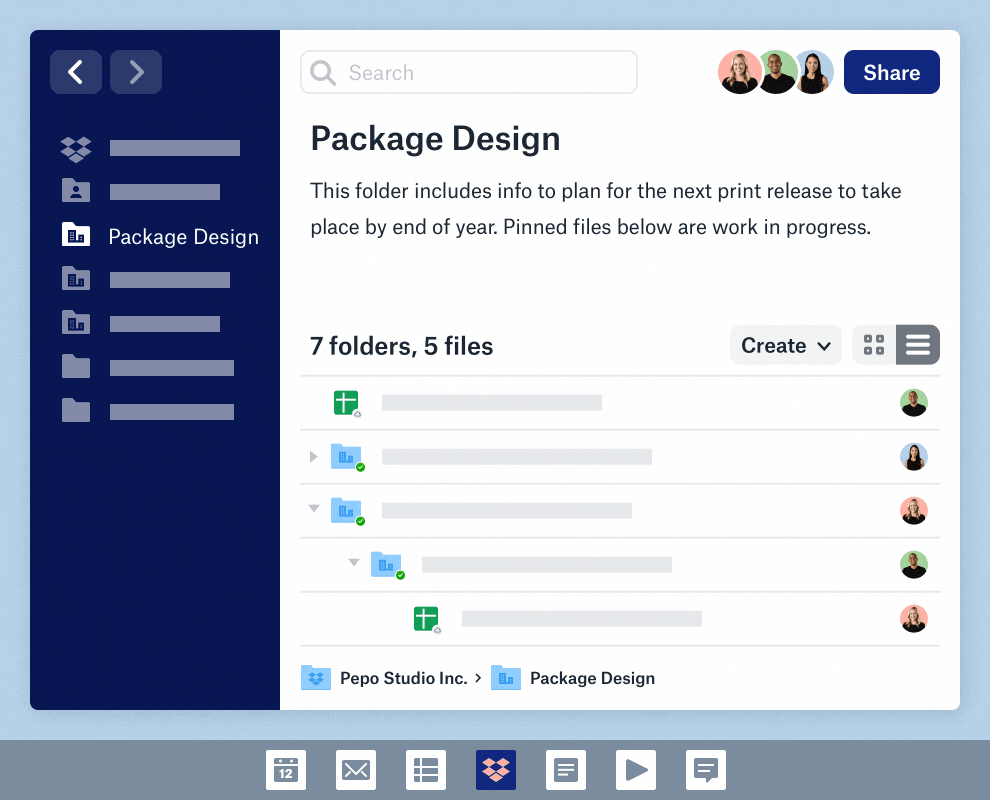Hello. I do content design and strategy. I’ve worked on UX flows and product launches at Meta (Facebook), Dropbox and a startup acquired by Amazon. Here are some samples.
Get in touch.
EXPERIENCE
Meta → Content Designer, 2019–2022
Dropbox → Content Strategist, 2016–2019
Graphiq → Managing Editor: Content Marketing, 2009-2016
Meta (Facebook)
Internal integrity tool content design
Background
Meta uses a variety of internal integrity tools to help spot emerging risks before they become a bigger problem.
My role
I was the primary content designer for a team focused on critical events, like elections and protests. I designed the content UX for several of these tools—including some from scratch—which are now used by dozens of in-house investigators and data scientists.
Outcomes
The design improvements to these tools helped save our investigators hours—and sometimes days—of time toward spotting the root causes of emerging risks.
Note: Due to the sensitive nature of Meta’s internal integrity tools, I’m unable to share the actual UI and content here.
Transparency reports
Background
Meta provides a Transparency Center that explains how the company enforces its policies, the technology it uses, and what data it reports. Within this center, Meta publishes a quarterly Community Standards Enforcement Report detailing the prevalence and volume of violating content on Facebook and Instagram over time.
My role
I was the primary writer for the Transparency Center website, and the lead writer for two of the quarterly reports. I collaborated with data engineering, content policy and legal.
Outcomes
These reports detail how the prevalence of violating content has generally decreased on Facebook and Instagram, thanks in part to Meta’s investment in content moderation AI and machine learning. Read the latest report here.
Labels for fact-checked information
Background
Posting misleading or false information is not against the rules for apps like Facebook or Instagram, but Meta has an opportunity to provide context to users.
My role
I collaborated with content and product designers in a series of review sessions to workshop different phrasings, tones and word choices. The team also determined the best information hierarchy for the content, as well as where in the user flow to present the information.
Outcomes
Along with typical metrics like engagement, the team tracked how often users would still reshare a post despite the labels. Share rates were meaningfully lower where we added labels, limiting the distribution.
Information hierarchy-informed terminology
Background
Within Meta integrity teams, the names of various violation types, related actions and associated content types (e.g. event vs. group vs. page) are sometimes inconsistent and confusing. One team might use one set of jargon, while another uses something different. This presents a problem both for team processes and the content design of the tools themselves.
My role
I partnered with investigators, UX researchers and engineers to overhaul the terminology systems in these tools. Where possible, I combined user-friendly names with an analytical structure, such that the terms would closely match the organization of the underlying code for each tool.
Outcomes
Starting with two key tools, I was able to implement a more intuitive terminology system. This both helped new users onboard faster and saved front-end engineering time, as the user-facing content aligned more closely to how the data was already stored.
Dropbox
Content strategy across UX, marketing and product
Background
While at Dropbox, I contributed to a variety of product and feature launches, including Dropbox Professional, the new Dropbox desktop app, and new features for Dropbox Paper.
My role
As a content strategist, I worked alongside UX writers, product marketers and comms professionals to ensure a cohesive and coordinated message—in the product UI, on the homepage, in blog posts and in press releases. Together with these colleagues, we also developed new voice and tone standards Dropbox-wide.
Outcomes
The launches clarified Dropbox’s strengths (simplicity, reliability and integration) while also highlighting the company’s challenges (e.g. expanding the brand beyond “file sync and share”).
Our engineers and designers used these outcomes to better prioritize product strategy and investment going forward.
Graphiq
Content marketing and data-driven storytelling
Background
Graphiq began as “FindTheBest,” a website that followed the Kayak or Zillow vertical search model, but for the 1,000 other things, like smartphones, ski resorts and dog breeds. Over time, we pivoted to data visualization and changed the company name to Graphiq. In 2017, Amazon acquired the company under its Alexa division.
My role
I was the first employee after the founders. I started in a research and product management role, but became the de facto “content guy” from year two onwards. Eventually, I started and managed a content marketing team of 10 writers (mix of in-house and freelance). We published hundreds of stories featuring our data and visualizations in publications like TIME, Business Insider, Forbes, PC World and Sports Illustrated, among others.
Note: many of the old visualizations in the linked articles have since been removed due to lack of ongoing technical support.
Metrics and outcomes
Our stories drove hundreds of thousands of visits to Graphiq’s data and visualization resources.




